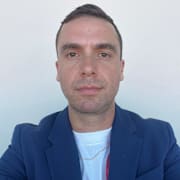A Surgeon Sheds Light on 49ers WR Brandon Aiyuk's Recovery Timeline

Brandon Aiyuk has a long, difficult rehab ahead of him.
Aiyuk recently tore his ACL and MCL -- a devastating injury for any football player, but particularly for a wide receiver who relies on speed and quickness.
To find out more about Aiyuk's rehabilitation process, we spoke to Ayoosh Pareek MD, sports medicine surgeon at the Hospital for Special Surgery in New York. HSS has physicians who serve as team doctors for many professional sports teams including the New York Giants.
Here's what Pareek said about Aiyuk's recovery.
Q: How long does the recovery process take compared to a clean ACL tear?
PAREEK: For ACL injuries, pro athletes typically aim to return within 9-12 months. MCL injuries, especially minor ones like sprains or partial tears, often show up with ACL tears but usually don't change the return-to-play timeline. Most of the time, MCL injuries heal with rehab alone, and players can stay on track for recovery. However, in cases where the MCL tear is more severe and needs surgery, the process can take longer—adding 1-3 months to the return to sport timeline. That timeline can shift depending on factors like the player’s position, surgical variability, and individual rehab progress. If both the ACL and MCL need surgery, it makes recovery more complex, and some of the usual milestones, like running or cutting drills, might get delayed. Fortunately, surgery for the MCL is less common, which helps keep most players on the standard recovery path.
Q: What percentage of NFL wide receivers make full recoveries from Aiyuk's particular injury?
PAREEK: Giving a percentage is difficult not knowing the specific injury details, but with modern surgical techniques and rehabilitation, we expect more NFL wide receivers to make full recoveries than not. Still, we are learning that their first season back is not always as productive as their pre-injury seasons, and they continue to make progress over the 1-2 years after surgery. The risk of reinjury remains a concern both on the ipsilateral knee and the contralateral knee, which is why staying strong mentally and physically remain important tenets of high-level sport participation.
Q: What typically is the most difficult aspect of the recovery process?
PAREEK: One of the most challenging aspects of recovery is addressing both the physical and psychological components. Athletes must overcome not just the physical demands of rehabilitation but also mental hurdles, such as fear of re-injury, which can impact confidence and performance. The surgery itself is usually an outpatient procedure, but the long-term rehabilitation process requires sustained commitment over months or even years. We are increasingly seeing the importance of psychological readiness in elite athletes. Sports psychologists are playing a larger role in helping athletes regain confidence, especially for high-demand sports like football. Mental preparation is now considered as crucial as physical rehabilitation, helping athletes stay motivated, avoid burnout, and perform optimally upon their return to the field.
Download and follow The Best 49ers Podcast.
